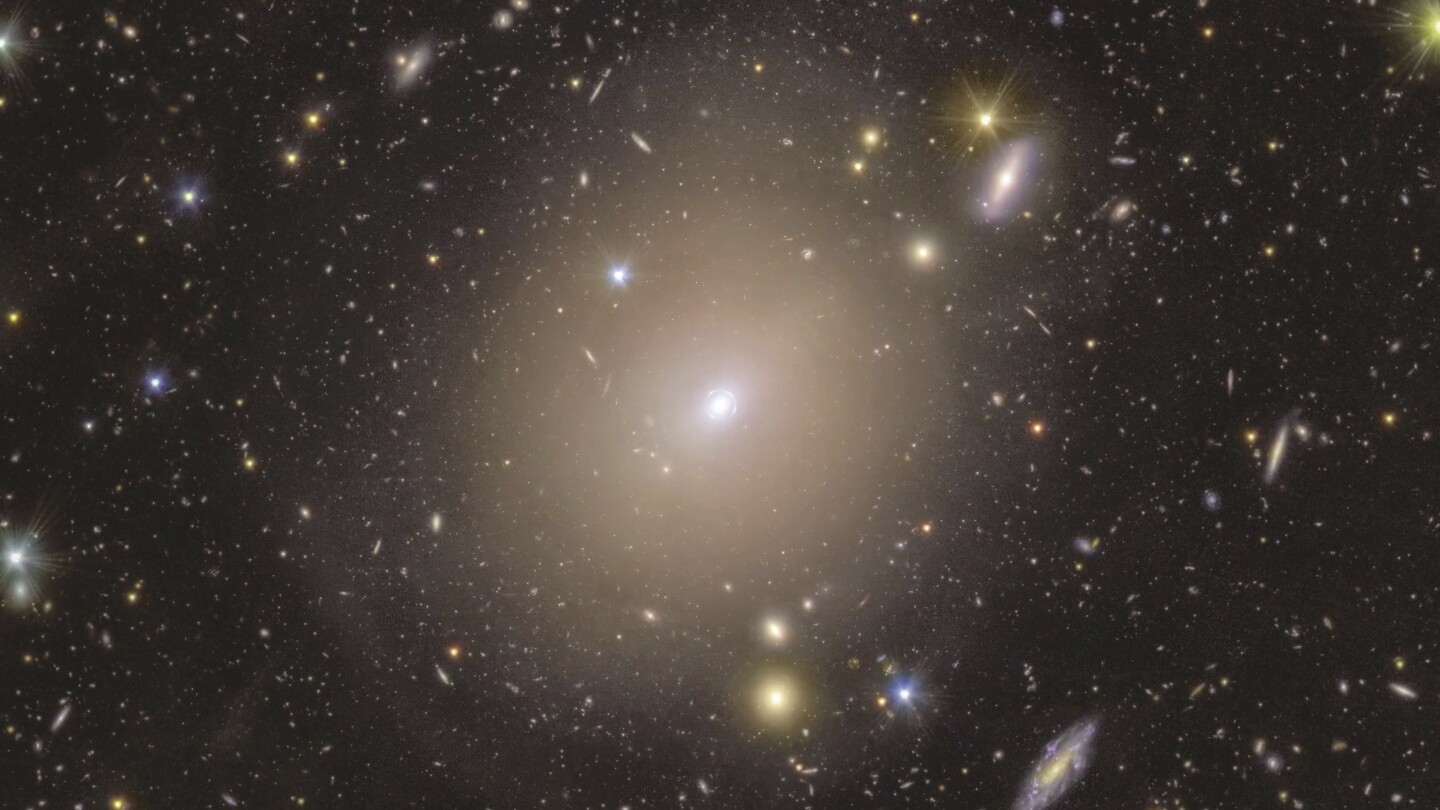Science
Space telescope spots rare ‘Einstein ring’ of light around galaxy in our cosmic neighborhood

A Rare Cosmic Wonder: The Discovery of an Einstein Ring by the Euclid Space Telescope
Unveiling the Mystery of the Universe: The Einstein Ring Discovery
In a groundbreaking astronomical discovery, Europe’s cutting-edge Euclid space telescope has uncovered a rare and breathtaking phenomenon in the cosmos: a bright, glowing ring of light encircling a nearby galaxy. This mesmerizing structure, known as an Einstein ring, is a result of gravitational lensing, a process predicted by Albert Einstein’s theory of general relativity. The galaxy at the center of this ring is located approximately 590 million light-years away from Earth, a relatively close distance in cosmic terms. Remarkably, this galaxy has been known to astronomers for over a century, yet the existence of the Einstein ring surrounding it remained undetected until now. The discovery was recently published in the prestigious journal Astronomy and Astrophysics, shedding new light on the intricate workings of the universe.
What is an Einstein Ring?
An Einstein ring is a rare and awe-inspiring cosmic phenomenon that occurs when light from a distant galaxy bends around a closer object, such as another galaxy, due to the warping of spacetime caused by gravity. In this case, the light originates from a galaxy more than 4 billion light-years away, which is far beyond the galaxy at the center of the ring. The closer galaxy, located in the constellation Draco, acts as a gravitational lens, bending the light from the distant galaxy into a perfect ring shape. This phenomenon is not only visually stunning but also scientifically significant, as it provides astronomers with a unique tool to study the universe in unprecedented detail.
The Science Behind Gravitational Lensing
Gravitational lensing occurs when massive objects, such as galaxies or black holes, distort the fabric of spacetime around them. This distortion acts like a lens, bending the path of light from more distant objects behind them. In some cases, when the alignment between the observer, the foreground object, and the background object is just right, the light from the distant object forms a perfect ring around the closer object. This alignment is extremely rare, making Einstein rings among the most sought-after observations in astrophysics. The Euclid space telescope, with its advanced technology, was able to capture this fleeting moment of cosmic alignment with remarkable clarity.
The Significance of the Discovery
The discovery of this Einstein ring is particularly exciting for astronomers because of its proximity to Earth. At 590 million light-years away, the foreground galaxy is relatively close compared to other objects in the universe. This nearby location, combined with the perfect alignment of the galaxies, makes this Einstein ring a scientifically invaluable find. Astronomers can use this rare phenomenon to study the distribution of mass in the universe, including the mysterious dark matter and dark energy that make up most of the cosmos. Additionally, the ring provides a unique opportunity to learn more about the distant galaxy that is lensed, offering insights into the formation and evolution of galaxies billions of years ago.
The Euclid Space Telescope: A Mission to Uncover the Universe’s Secrets
The Euclid space telescope, launched in 2023 from Cape Canaveral, Florida, is a collaborative mission between the European Space Agency (ESA) and NASA. Its primary goal is to explore the nature of dark energy and dark matter, which are believed to drive the expansion of the universe. Equipped with state-of-the-art instruments, Euclid is designed to map the distribution of galaxies and galaxy clusters across the cosmos, providing unprecedented insights into the universe’s structure and evolution. The discovery of the Einstein ring is just one example of the telescope’s incredible capabilities, demonstrating its potential to make groundbreaking contributions to our understanding of the universe.
A New Era of Space Exploration and Collaboration
The discovery of the Einstein ring highlights the importance of international collaboration in space exploration. The Euclid mission, supported by NASA and the ESA, exemplifies how global teamwork can lead to extraordinary scientific achievements. As we continue to explore the vast expanse of the cosmos, missions like Euclid remind us of the awe-inspiring beauty and complexity of the universe. This discovery not only deepens our knowledge of the cosmos but also inspires future generations of scientists and explorers to keep looking up at the stars, wondering what other secrets the universe holds.
In conclusion, the discovery of the Einstein ring by the Euclid space telescope is a testament to human ingenuity, scientific curiosity, and the boundless wonders of the universe. As we continue to explore and study the cosmos, we may uncover even more elusive phenomena that challenge our understanding of the universe and inspire us to reach for the stars.